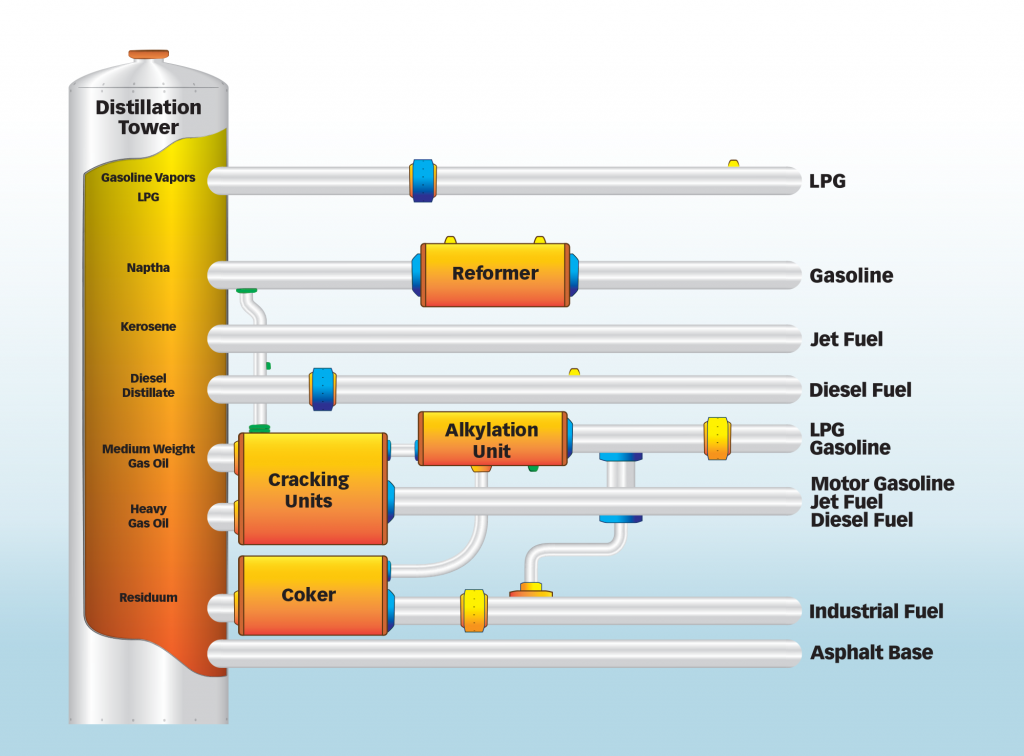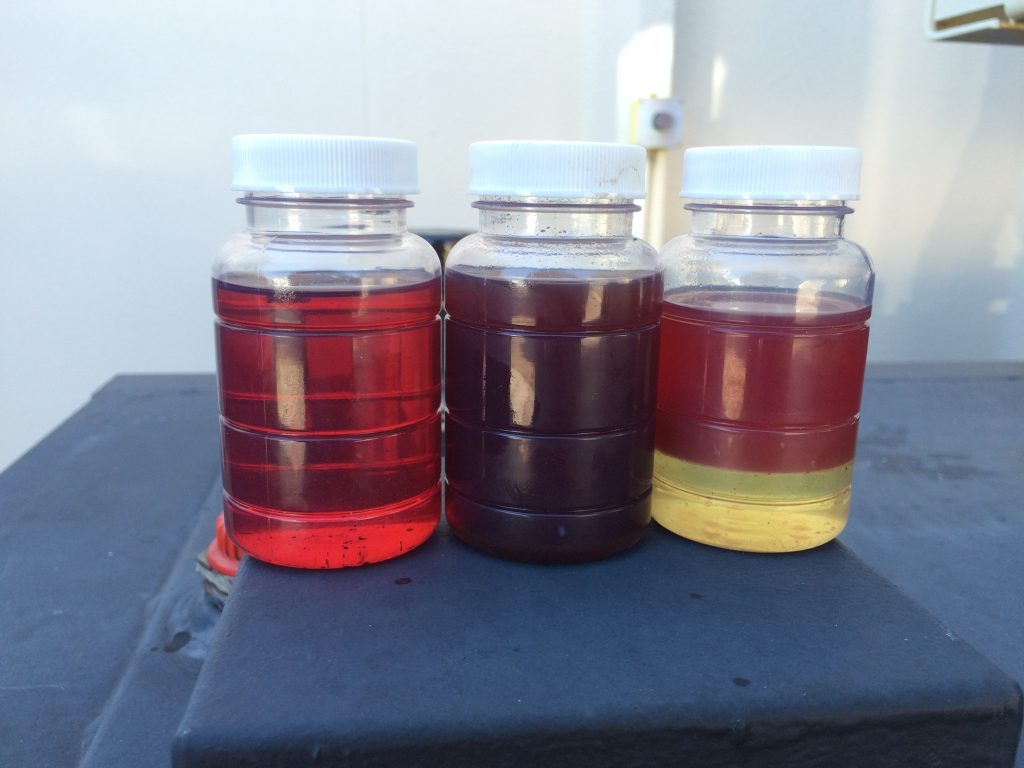What’s the Deal with Diesel Fuel?
When you ask folks about fuel for your car or truck you’ll end up with a whole bunch of facts and opinions. Well… opinions… mostly opinions. And mark my words everything that you hear will be about gasoline. You’ll usually get the response about where the cheapest place is to fuel up locally, or maybe you’ll get an opinion about the grades of fuel and what brand you should use… but that’s pretty much it.
Now the same can’t be said about what you get when you ask about diesel fuel, although that’ll be opinions as well… and wrong ones at that if you get if you get any responses at all! Depending on the crowd of people you’re quizzing, you might get responses like these: “It costs less than gasoline” (maybe, and that’s depending on the market conditions); “It has less energy than gasoline” (incorrect); “It has a peculiar smell” (correct, but “hello”… so does gasoline); “It won’t burn if it is spilled, such as in an accident” (sorry, wrong answer); “It’s oily” (bingo!); “It’ll freeze if it gets cold enough” (well… not exactly); “Running It pollutes the environment” (correct in the bygone days of yesteryear, but incorrect now); “It makes smoky exhaust” (only if the vehicle is out of adjustment… or modified to “roll coal”); “There are two diesel fuels: No. 1 diesel is low octane, and No. 2 diesel is high octane” Wow… beware these self-proclaimed experts!
The point is, diesel fuel is different from gasoline in many ways, and because you it plays a much bigger role in our current and future transportation, maybe it is worth a little discussion and demystification.

Okay, here’s the skinny on how diesel is born (and no… it has nothing to do with the Stork or when “two people love each other” nonsense): Just like gasoline, ordinary diesel fuel is refined from crude oil. During the refining process, different hydrocarbon compounds are distilled from that crude; light gases such as methane and propane at one end of the spectrum, and heavy tar and asphalt at the other end. In between are naphtha (a cleaning solvent), gasoline, kerosene (jet fuel), diesel fuel, heating oil, and lubricants (motor oil, grease), just to name a few. How the crude is refined can vary the percentages of each of these categories of distillates somewhat. For example, if you decrease the amount of gasoline, you can increase the amount of diesel by roughly the same amount, within limits. What you get also depends on the composition of the crude oil you’re refining. For example, crude oil that contains a high percentage of sulfur is called “sour crude” as opposed to low sulfur “sweet crude”. We won’t turn this into a petro-chemistry discussion, but the sulfur content is important, especially as it relates to diesel fuel. A high sulfur content is undesirable in fuels, such as gasoline and diesel, because it forms sulfur dioxide and sulfates during the combustion process, which contribute to pollution and “acid rain”. In case you’ve ever wondered, the acid we’re talking about is sulfuric acid — not the stuff you want to rain on your parade, or really anything else for that matter. Sulfur has another drawback: it “poisons” catalytic converters intended to reduce NOx (oxides of nitrogen), another polluting by-product of combustion. Unfortunately, NOx is the prominent polluting gas emitted by diesels.
To meet clean air emission standards, diesel burning vehicles need to have a special exhaust gas emissions system (more on that system and what does what in a future installment). This meant that a switch to “ultra low-sulfur diesel” (ULSD) fuel was needed. Unfortunately, progress comes at a price and removing the sulfur from today’s sour crude is complicated and expensive.
So where does that leave the price of diesel fuel compared to gasoline? Currently, diesel is approximately the same price as regular gasoline, depending on where you buy it and the state taxes that apply. World oil supplies also impact the variance cost in diesel fuel.
Diesel powered vehicles tend to operate more efficiently than gasoline engines (but with the advances in Gasoline Direct Injected power plants the gap is narrowing). Diesels frequently get fuel mileage as much as 40 percent better than comparable weight vehicles with similarly sized gasoline engines, and some experts say fuel economy up to 60 percent better than gasoline is within reach. Part of the reason diesels get better fuel economy and make more power than gasoline engines is that diesel fuel has approximately 11 percent more energy per gallon than gasoline. A typical gasoline has 124,800 Btu per gallon, while typical diesel has 138,700 Btu per gallon. It is the low volatility of diesel fuel that makes it less likely to ignite if spilled, but given an ignition source… it will ignite. It is, after all, fuel. In your face, myth!
Another myth is that diesel fuel freezes if the temperature gets too low. While diesel won’t “freeze” at temperatures most of us are likely to encounter, it does have peculiarities related to low temperature. We’ve already mentioned diesel’s low volatility. While that contributes to hard starting at cold temperatures in older diesels, but today’s modern diesels with common-rail or Piezo fuel injection and ultra high fuel injection pressure have little problem getting things going. Diesel fuel also has another characteristic called “cloud point”. This is the temperature at which tiny wax crystals begin to form in diesel fuel. If sufficient wax crystals form it will thicken the fuel affecting its ability to flow through fuel lines and fuel filters. This may be what some people refer to as “freezing”. Many modern diesels have fuel heaters to prevent wax formation at cold temperatures.

Another enemy of diesel fuel is water since it can cause injector pump damage and fuel injector corrosion. Water also promotes the growth of microorganisms in the fuel that can plug fuel filters. Water gets into the fuel from condensation in storage tanks and vehicle tanks, or through unshielded tank vents. Diesels have water filters in the fuel system to remove minor water contamination, but if the problem gets too bad water deposits (which will seek low points in the fuel line or tank) can actually freeze during low temperatures. Keep in mind that water is not the fuel and that the fuel is not technically the one that’s freezing. Diesel fuel must also be kept very clean to prevent damaging the close-tolerance fuel injection pump or plugging the fuel injection nozzles. Dirt or particles in the fuel are the result of mishandling of the fuel or storage in dirty containers or tanks.
The refining companies are well aware of the starting problems associated with diesels in cold weather, and they usually “winterize” their diesel fuel by mixing 15-20 percent No. 1 diesel with the conventional No. 2 diesel in cold climates. This improves the volatility of the fuel and reduces the cloud point to slightly lower temperatures. At this point, we should discuss the differences between the two grades of diesel fuel. Diesel No.1 and No.2 are the two common grades of diesel fuel. No. 2 diesel is by far the most widely used since it provides the most energy per gallon for improved power and mileage, and the highest lubricity for the fuel injection pump. Since it is a heavier distillate than No. 1 diesel, No.2 diesel is usually a few cents per gallon cheaper too. Some diesel engines are designed to operate specifically on No. 1 diesel, especially if the engine will be subjected to frequent starting and stopping, but No.1 diesel has several disadvantages. First, it provides less lubricity than No. 2 diesel, which can prove troublesome for some fuel injection pumps, and second, it contains roughly 95 percent of the heat energy of No. 2 diesel. And as we just mentioned, it’s a little more expensive too.
Unlike gasoline grades, the two grades of diesel fuel do not reflect different octane numbers. In fact, octane is not a measurement associated with diesel fuel at all. Octane is a quality of a fuel to resist self-ignition when subjected to heat and pressure. That’s important in gasoline engines since the fuel is already mixed with the air when the compression stroke occurs. It is important that the mixture doesn’t self-ignite in a gasoline engine until the timed spark ignites it for maximum power and efficiency. Pre-ignition could seriously damage a gas engine. Diesel engines, by comparison, rely on self-ignition of the fuel when it is injected directly into the cylinder at the top of the compression stroke. The ease with which a fuel is ignited when exposed to heat and pressure is measured by its cetane number. This is what is important in diesel fuel. Fuels with a high cetane number have good low temperature startability, and smooth, even combustion. Think of cetane as the fuel’s ignition quality. Most modern diesels that are highway driven work their best with a cetane rating between 45 to 55. Here’s the ratings: regular diesel is around 48; premium diesel in 55; biodiesel (B100) is 55; biodiesel blend (B20) is 50; and synthetic diesel is 55 or higher. While higher cetane numbers would help cold starting, there’s a trade-off. The higher the cetane number, the higher the cloud point of the fuel, which causes other problems at low temperatures, as previously explained. In warm climates, fuel clouding is not a problem and the cetane number is frequently higher
So… we’ve covered the major differences between gasoline and diesel fuel and hopefully dispelled some commonly held misinformation. I know it’s a lot to take in, but think of how awesome you’ll sound the next time someone talks about diesel fuels and how much octane it has. LOL… now you can put on your lab coat and school folks.
Until next time, have a powerful week.

